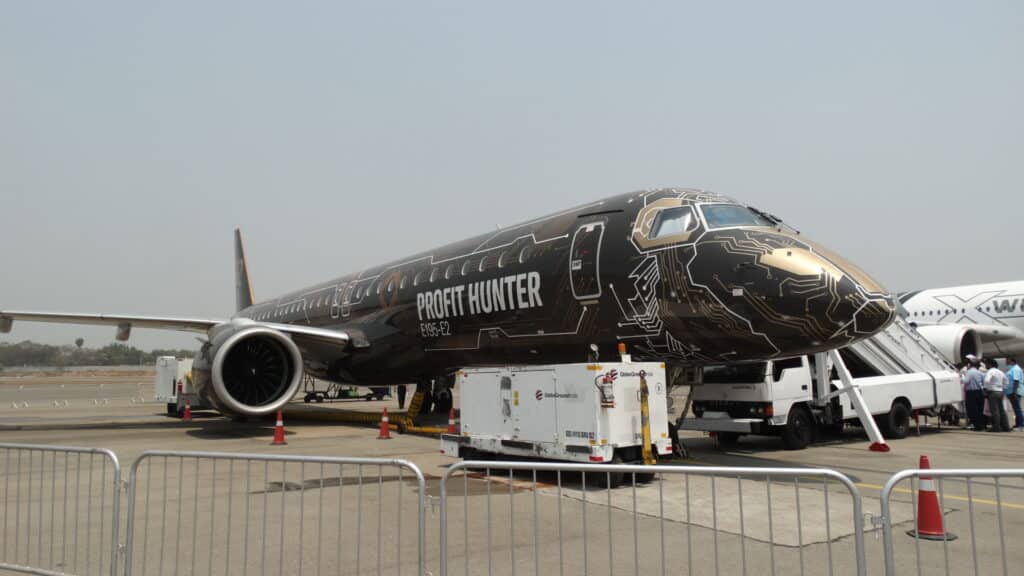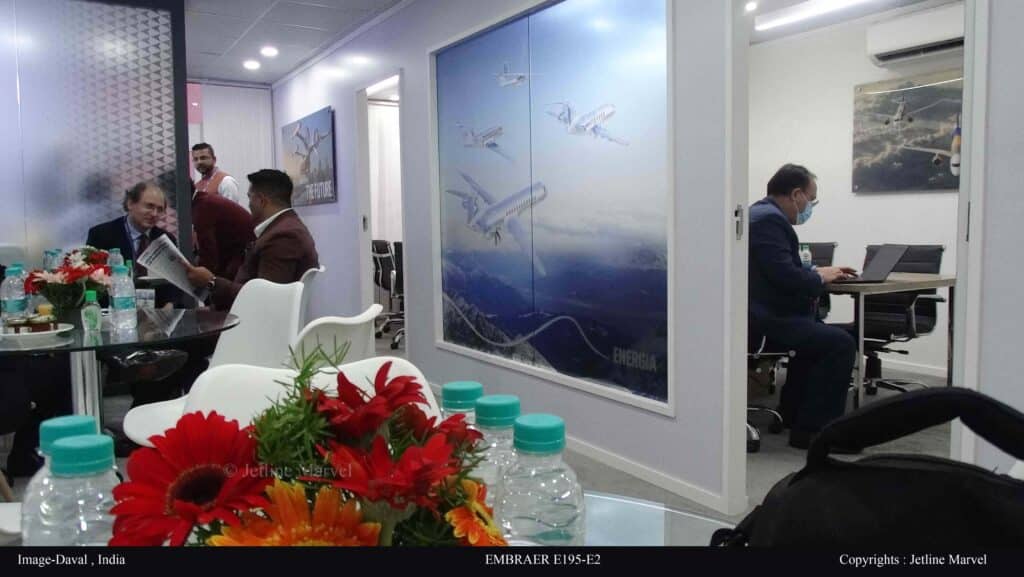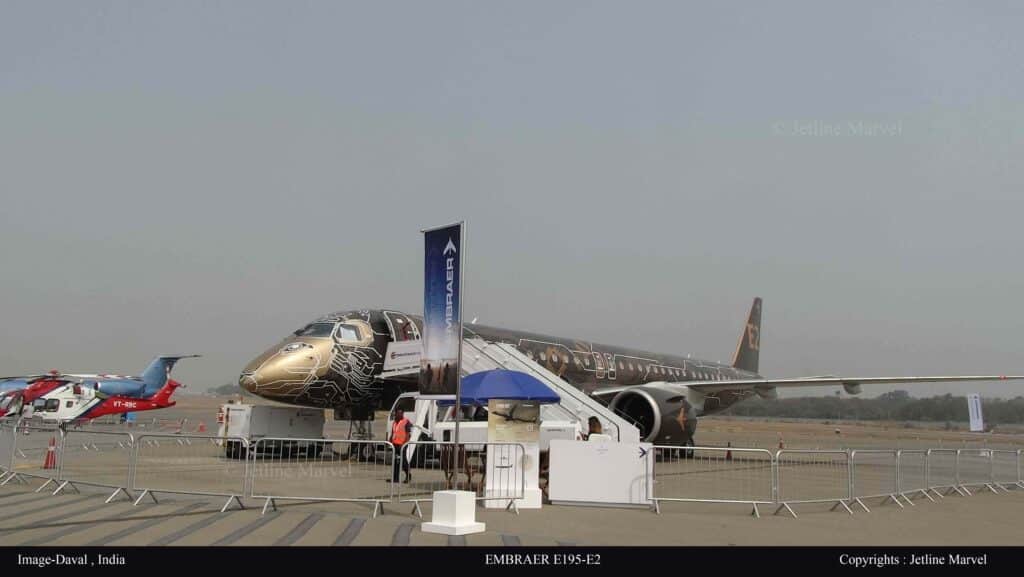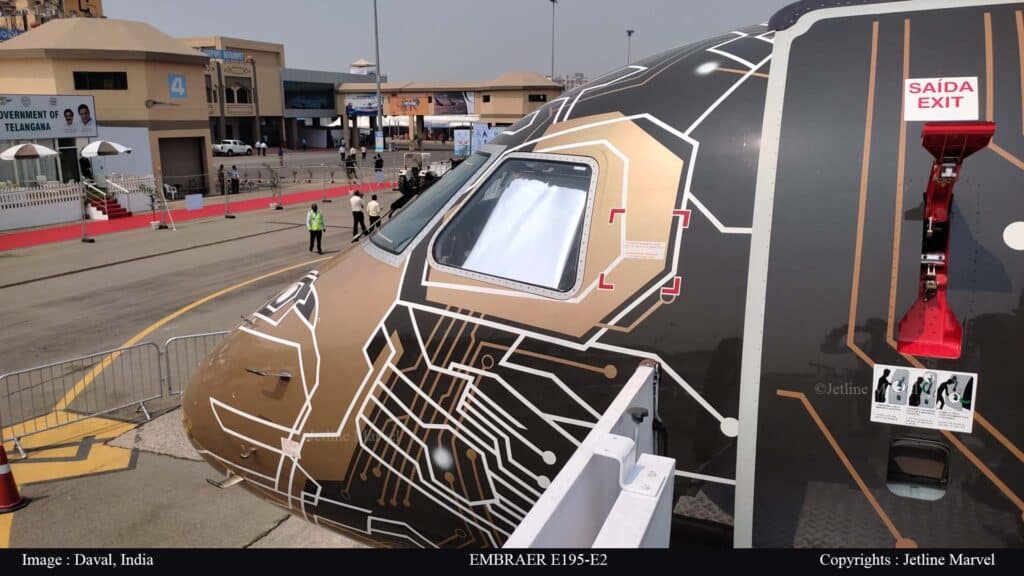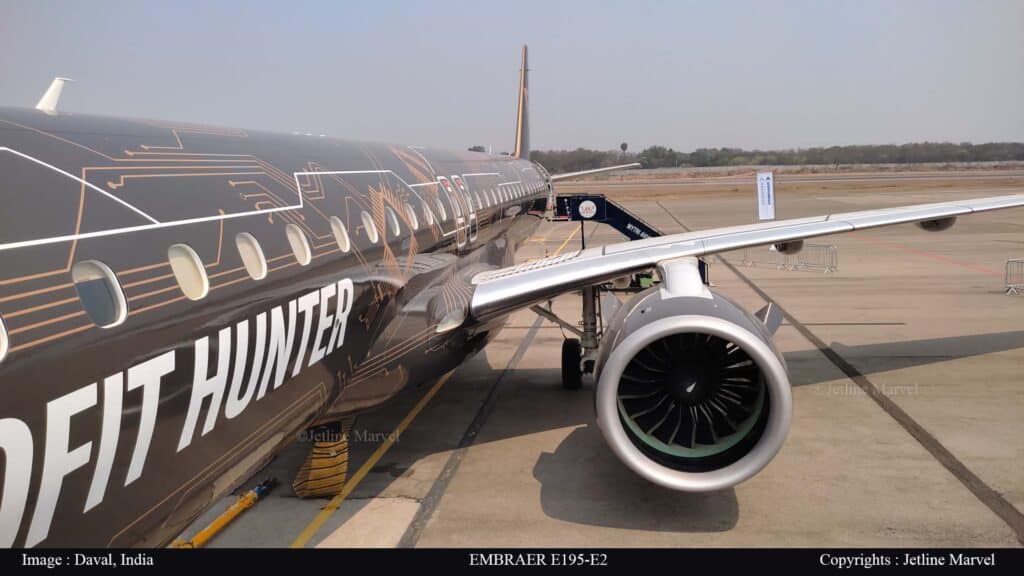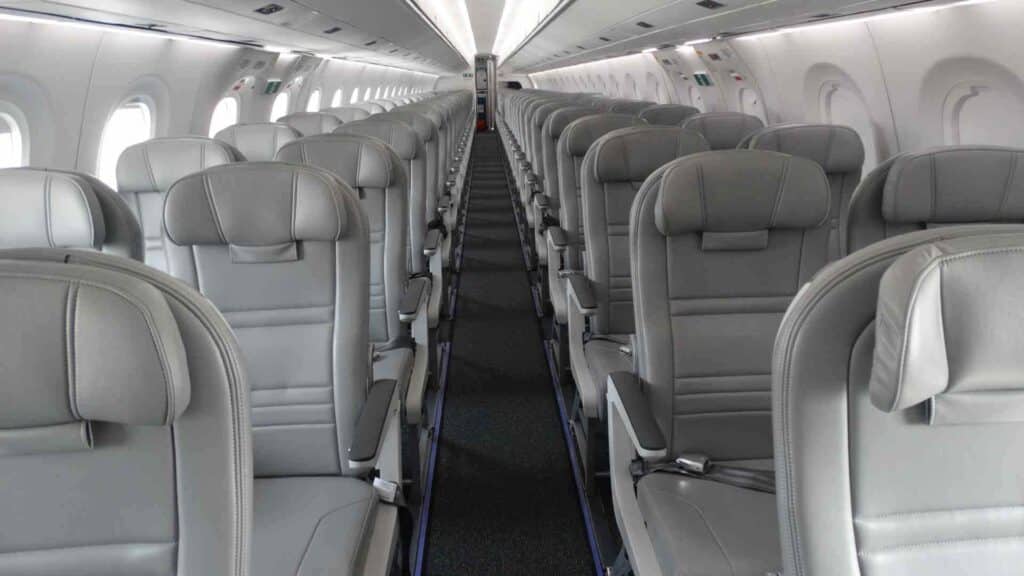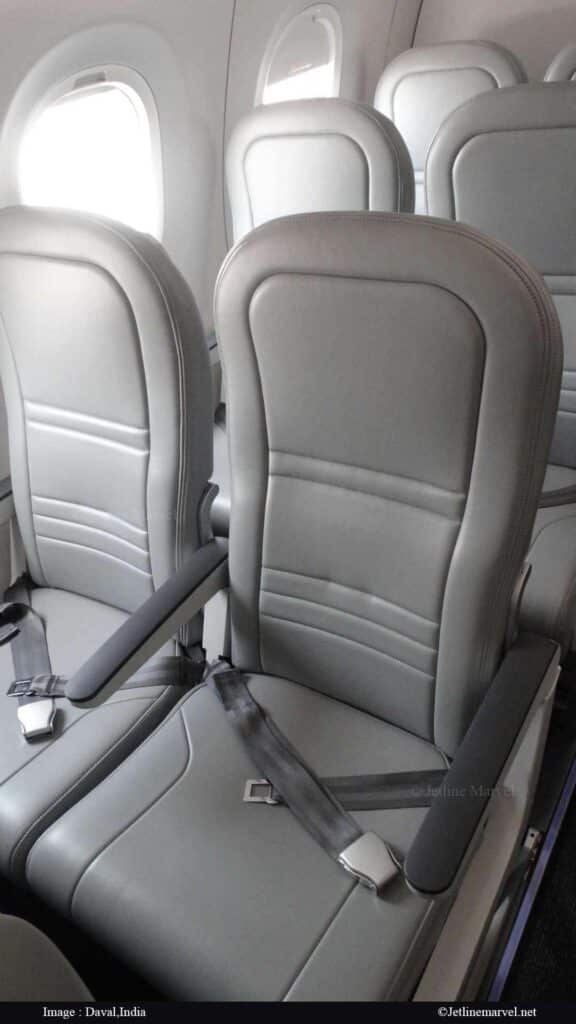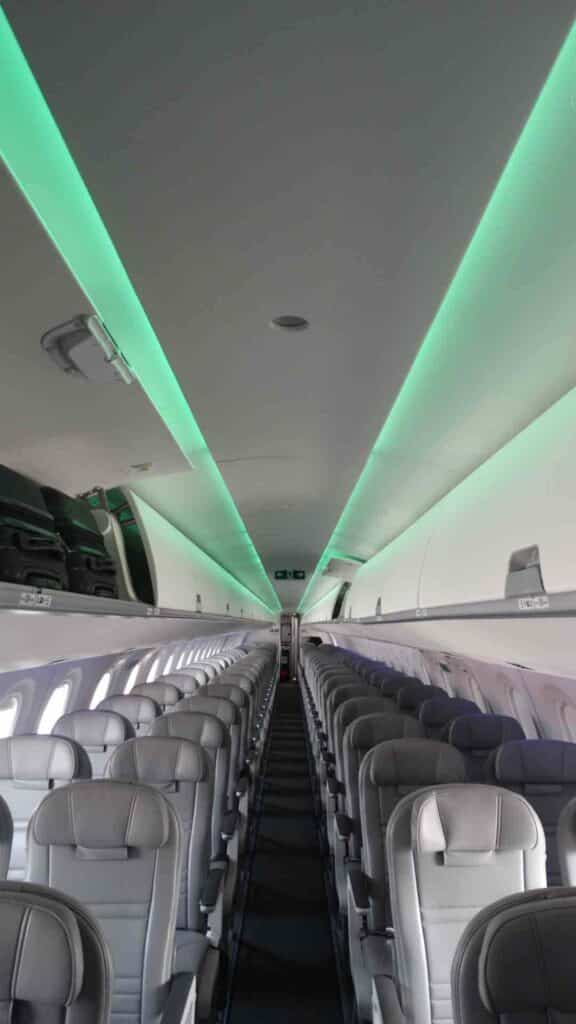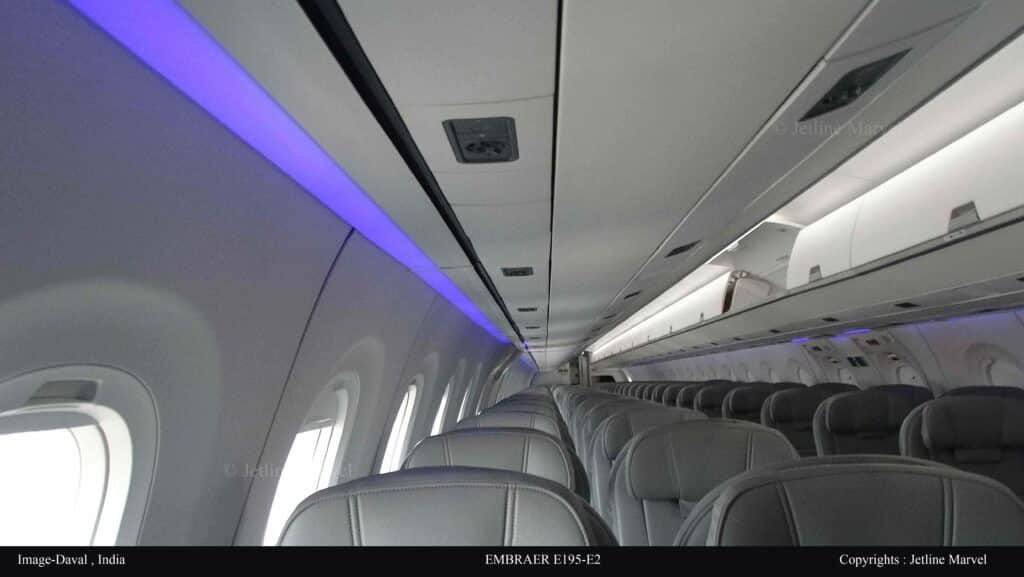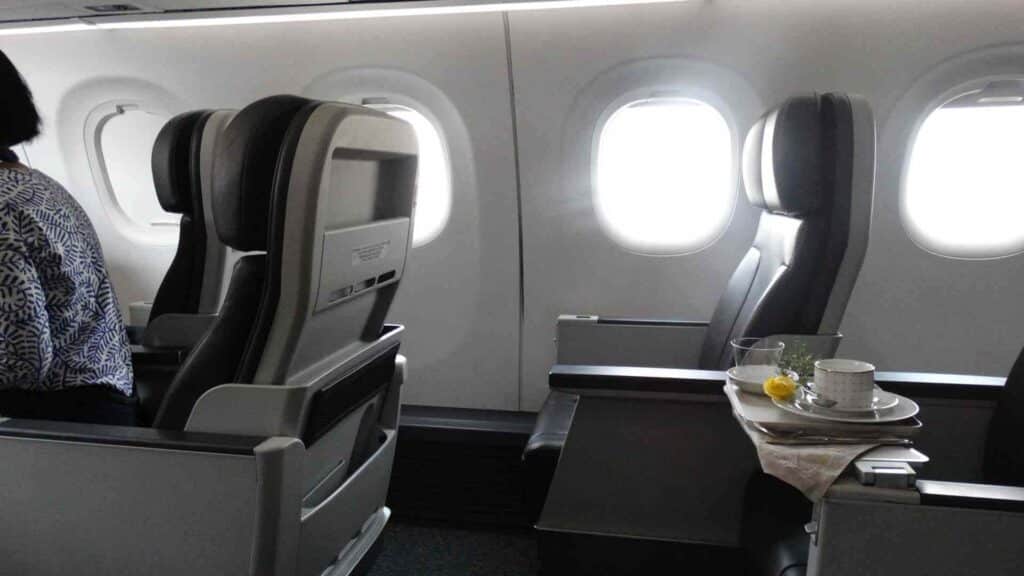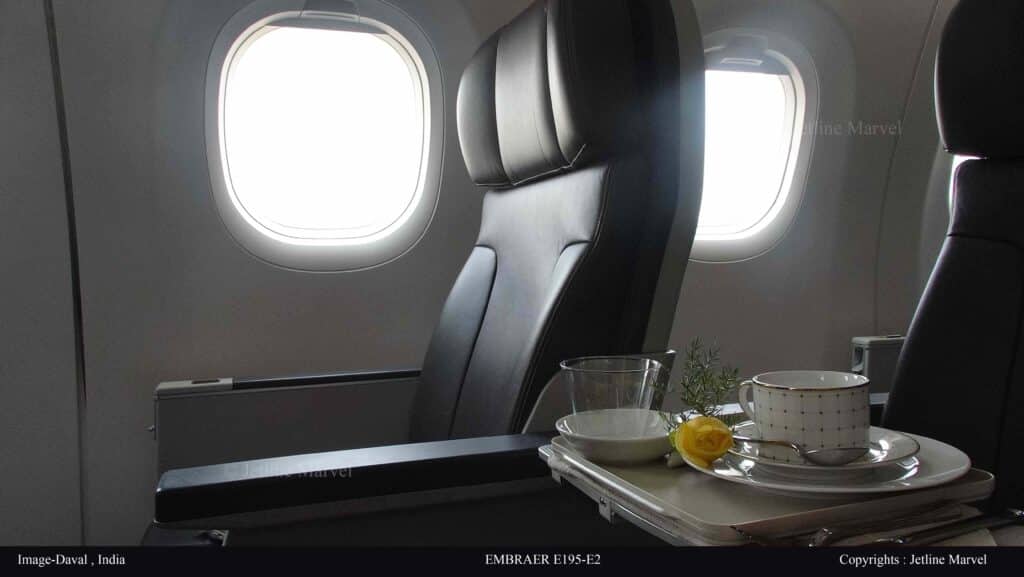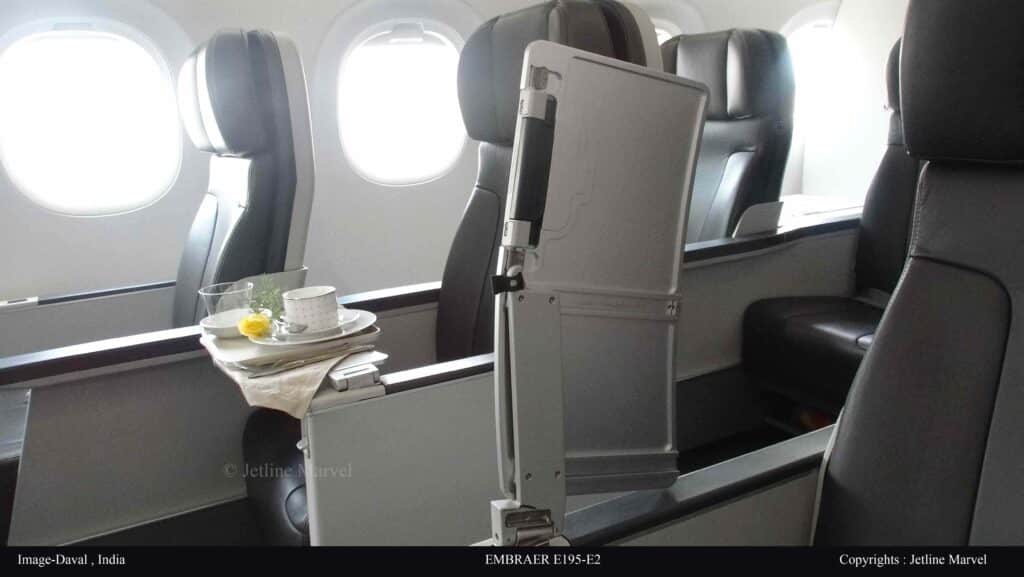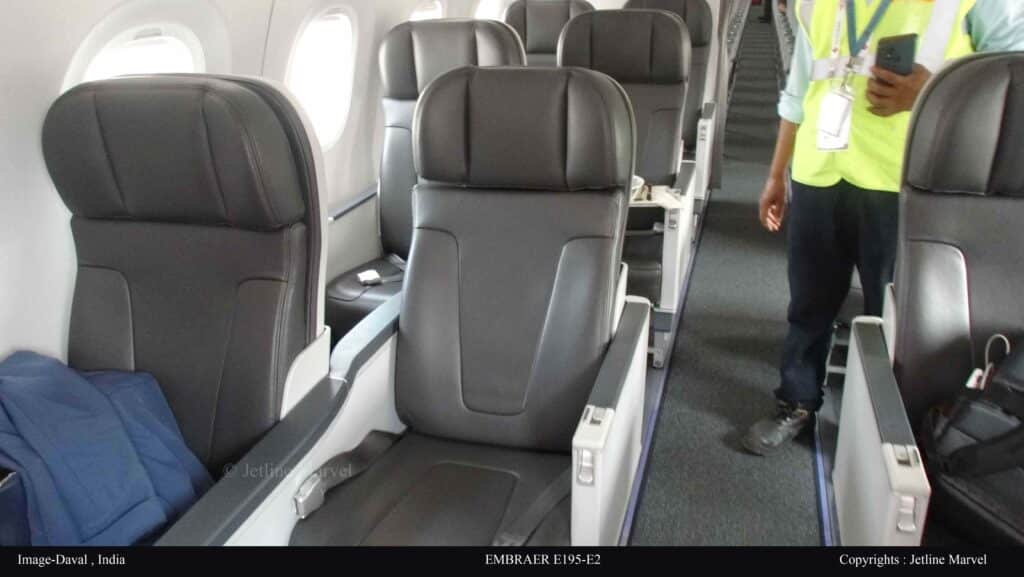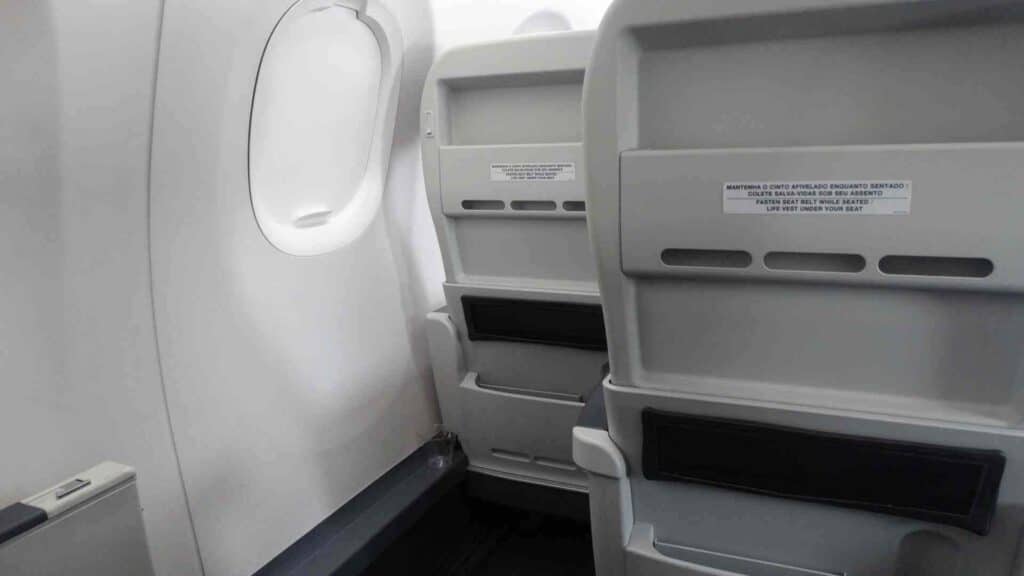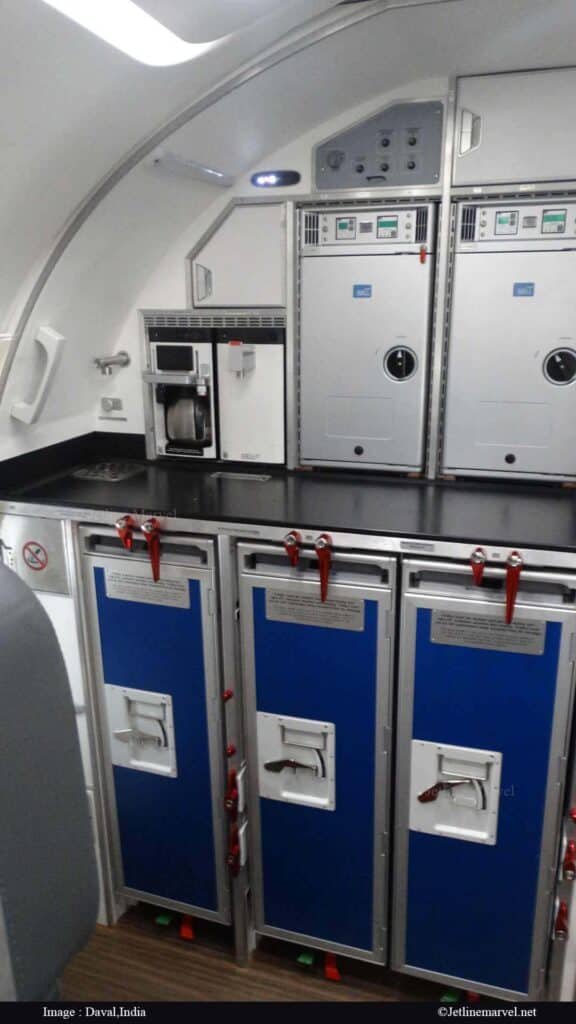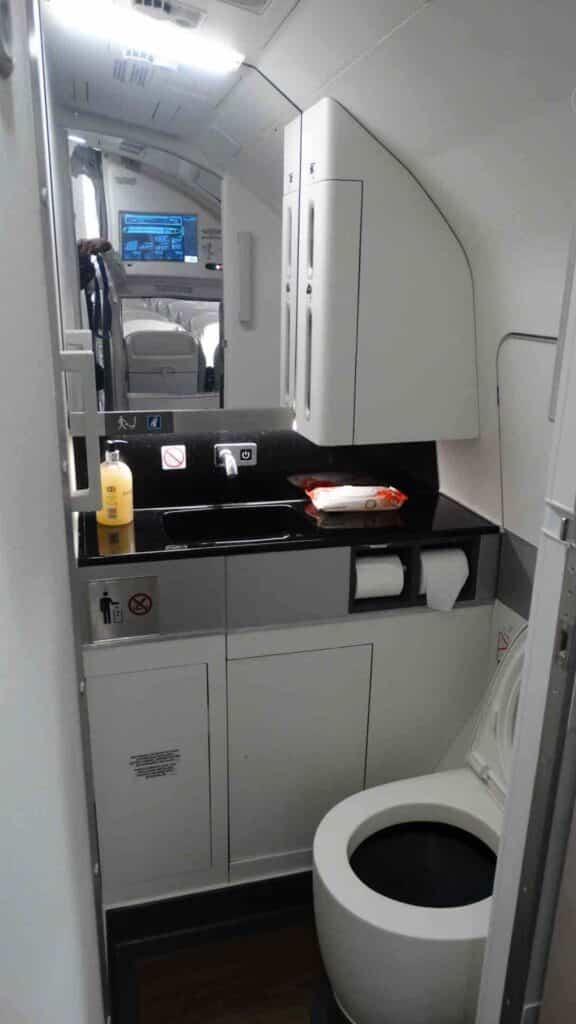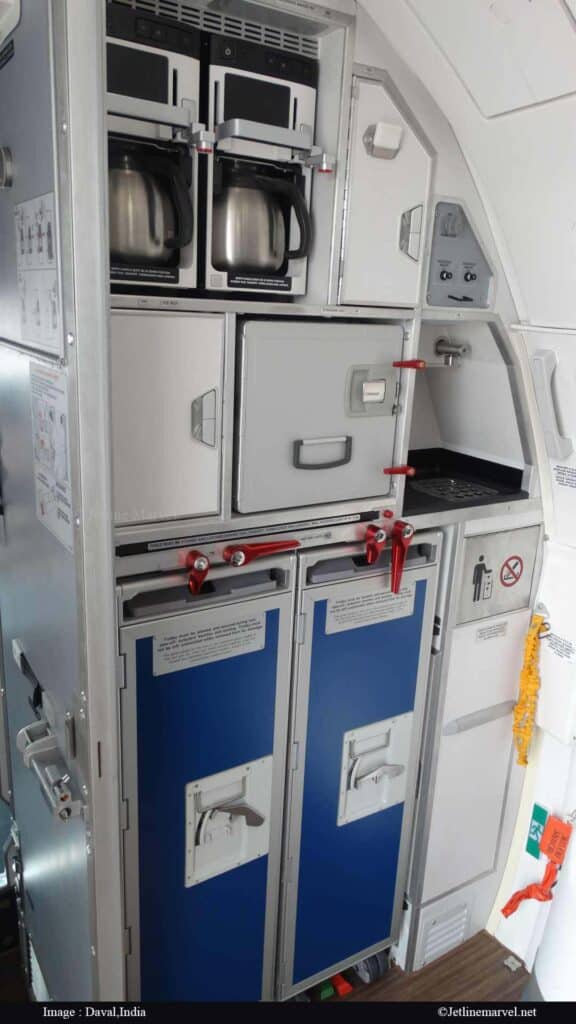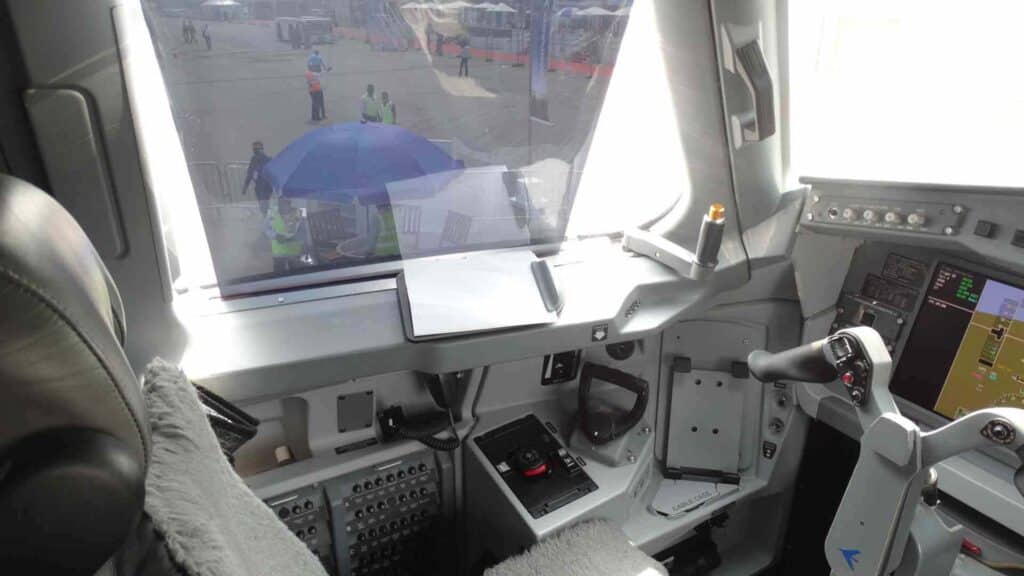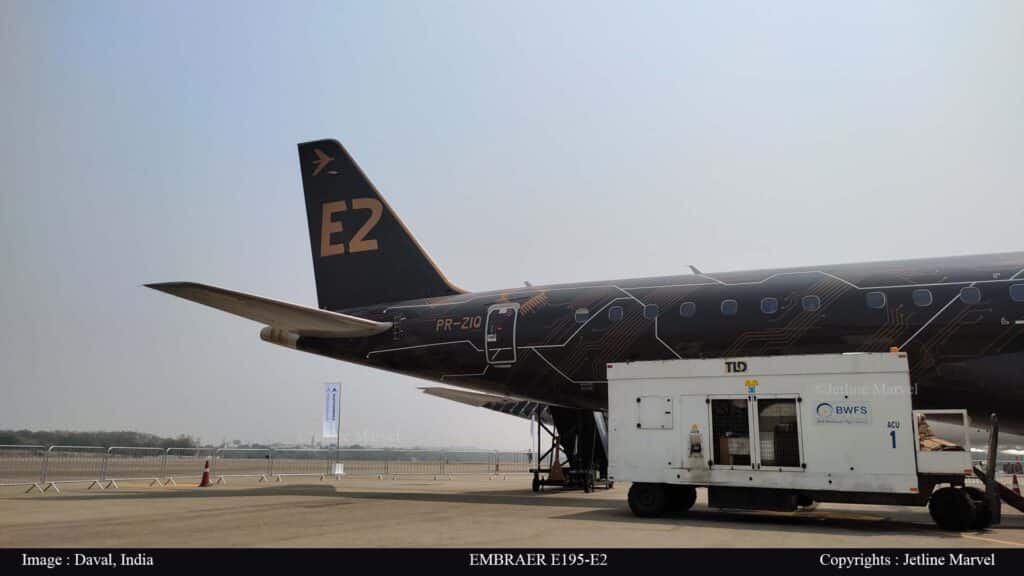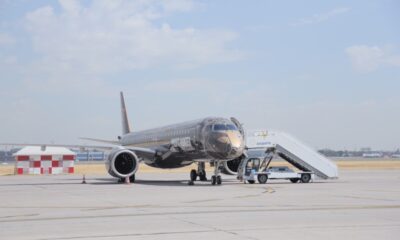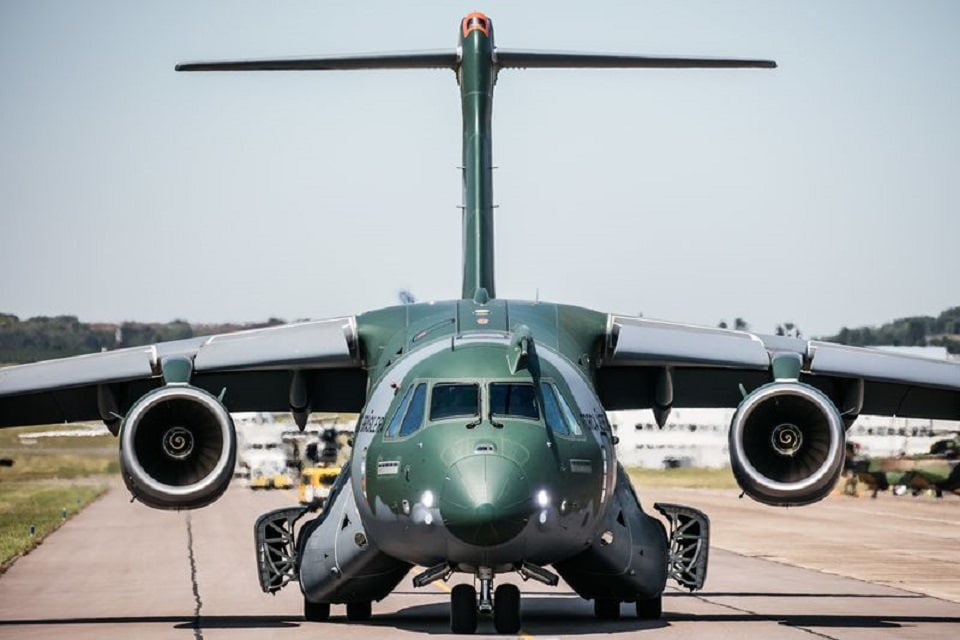Aviation
JM Exclusive tour onboard the EMBRAER E195-E2 Demonstrator.

At Wings India 2022, we had the opportunity to see a static exhibition of aircraft on tour. In this post, I’ll talk about the Embraer E195-E2’s cabin tour and why it’s one of the greatest planes in its class and the most appropriate aircraft for the Indian market.
I came to Embraer Chalet in the morning and met Nilma Missir-Boissac, Embraer’s APAC communication head. The hospitality of the Embraer team was outstanding, and their responses were humble and courteous. I also received a few interesting documents that helped me learn more about the plane. Nilma cited the fact that most aircraft, such as the A320 and B737, have a capacity of 180 seats or more yet only fill 130 – 140 seats, implying that the aircraft can only fill 70% of its capacity.
She goes on to say The Embraer is precisely matching the need for 90-140 seat capacity in the Indian market while also saving airlines a significant amount of money in terms of operations and fuel. The plane features plenty of legroom and accommodation, as well as a large luggage compartment that allows you to bring larger things on board. She went on to say that the E195-E2 aircraft has the most modern technical features and has been updated from previous generations, resulting in overall efficiency increases and a 17.3 percent reduction in fuel usage.
- New engines contributed 11% of the total.
- New Wings and Aerodynamic Cleaning received a 4.8% rating.
- Fly-By-Wire 1.8% from 4th Generations
Boeing Begins Build on New Zealand’s First P-8A Aircraft
Even before COVID, 50 percent of domestic flights in India had between 90 and 150 passengers every trip, according to Embraer’s analysis. The combination of optimal capacity and low unit cost of the E195-E2 makes it an appealing platform for connecting metro to non-metro and non-metro to non-metro cities in India.
[the_ad_placement id=”article-ad”]
The Embraer E-Jet E2 family of medium-range jet airliners is the successor to Embraer’s initial E-Jet. The first version, the E190-E2, flew for the first time on May 23, 2016, was certified on February 28, 2018, and went into service with Widere on April 24, 2018.
The three twinjet variants use the same four-abreast narrow-body fuselage with varying lengths and three new wings, Pratt & Whitney PW1919G turbofans in two sizes, updated avionics, and fly-by-wire controls.
As is usual in the aerospace industry, most of the best-selling aircraft are rebuilt with new features and technology to make them far more useful to consumers on the market while also improving fuel economy. The A320 neo and B737 max are segmented for several sorts of variants based on the seats and range, similar to how Airbus and Boeing reintroduced its A320 and B737 respectively with the A320 neo and B737 max. Similarly, Embraer resurrected its much-anticipated E195 aircraft from 2004 as the E195-E2 with new features and technologies to remain competitive in the market.
[the_ad_group id=”4059″]
One positive aspect of the E-series planes. Embraer built aircraft wings to match the size of the fuselage, lowering the weight and drag ratio, which is critical for aircraft. The wing span of the Airbus A320 series and the Boeing B737, for example, is the same. However, the wings of the Embraer E175,190, and E195-E2 have different sizes. This aids in the improvement of each aircraft’s performance.
As of March 31, 2021, 1,596 Embraer E195 aircraft have been sold. The E2, on the other hand, is taking its time to gain confidence in the fresh market. This aircraft is well suited to regional destinations with minimal traffic, such as China and India. E2 has received 205 orders from 12 clients throughout the world as of today. Azul of Brazil and Aircap of Ireland have placed the largest orders for E2 planes.
Air Costa Airlines was the first client for the E195-E2 in India, which was run by the Aircap firm, who provided three leased aircraft. However, they stopped in 2017, citing financial issues as the reason.
At Wings India 2022 in Hyderabad, Embraer showed its E195-E2 demonstration plane. Let’s take a look at how this aircraft obtained its cutting-edge avionics and interior design.
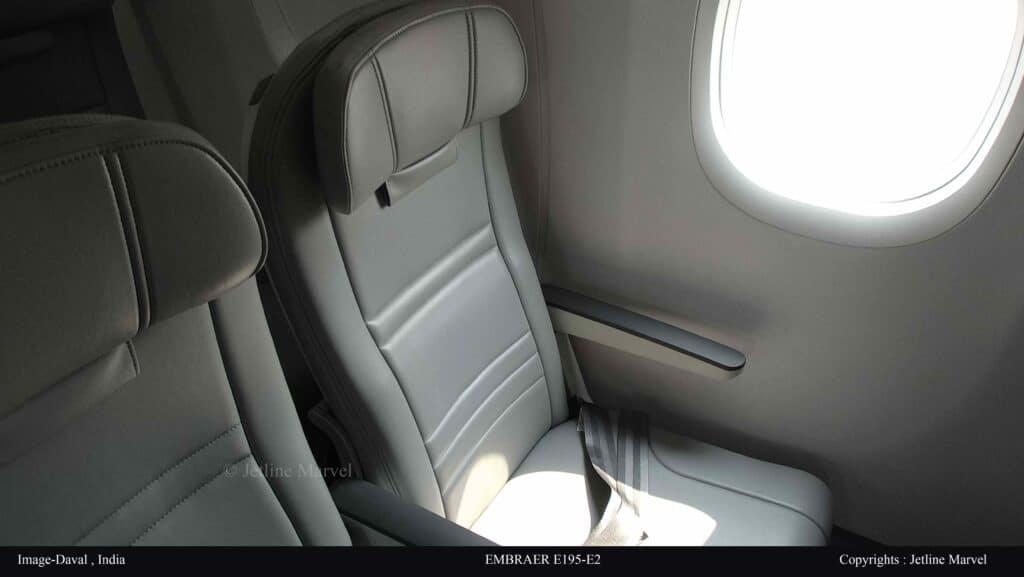
The middle portion features the Premium economy and adequate spacing, as well as a static seat configuration with a somewhat wider window.
At Wings India 2022 in Hyderabad, Embraer showed its E195-E2 demonstration plane. Let’s take a look at how this aircraft obtained its cutting-edge avionics and interior design.
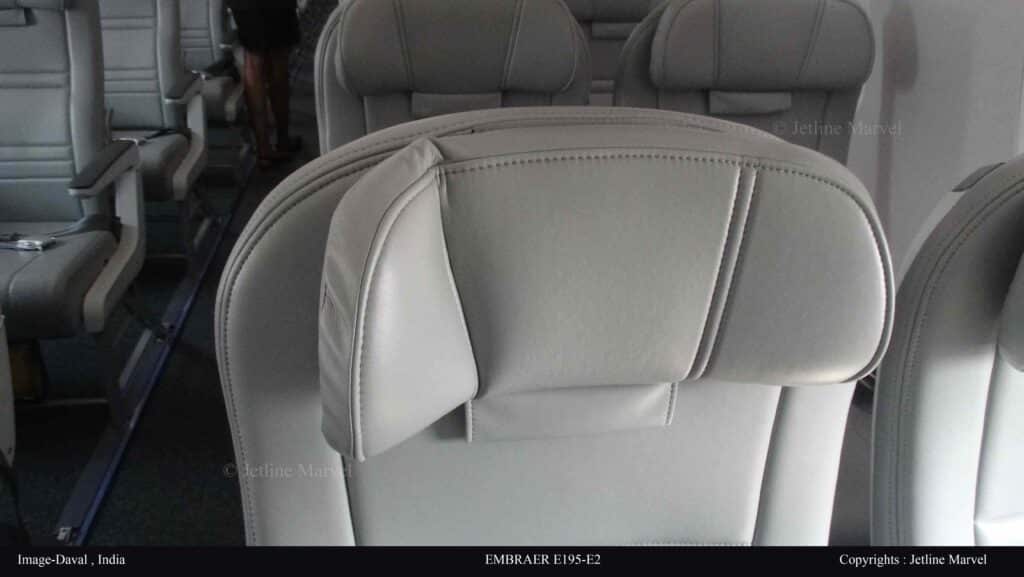
Passengers in Premium Economy may sleep without their heads resting on the shoulders of others thanks to the unique Headrest option.
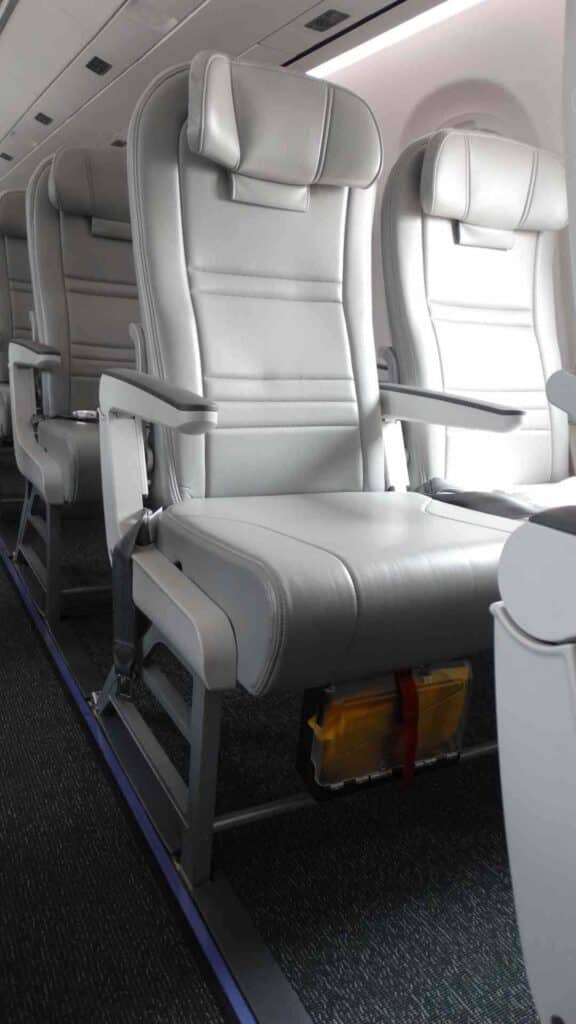
With a simple but practical design, emergency survival packs are located directly below the seats and provide enough room to store additional small bags or keep your legs cooler.
Embraer Develops Cargo Transportation Solutions for Commercial Aircraft
Brazil’s Embraer says KC-390 goes off runway in test
Embraer displays cutting-edge E195-E2 at wings India
The Embraer aircraft perform the taxiing operation on its own ?
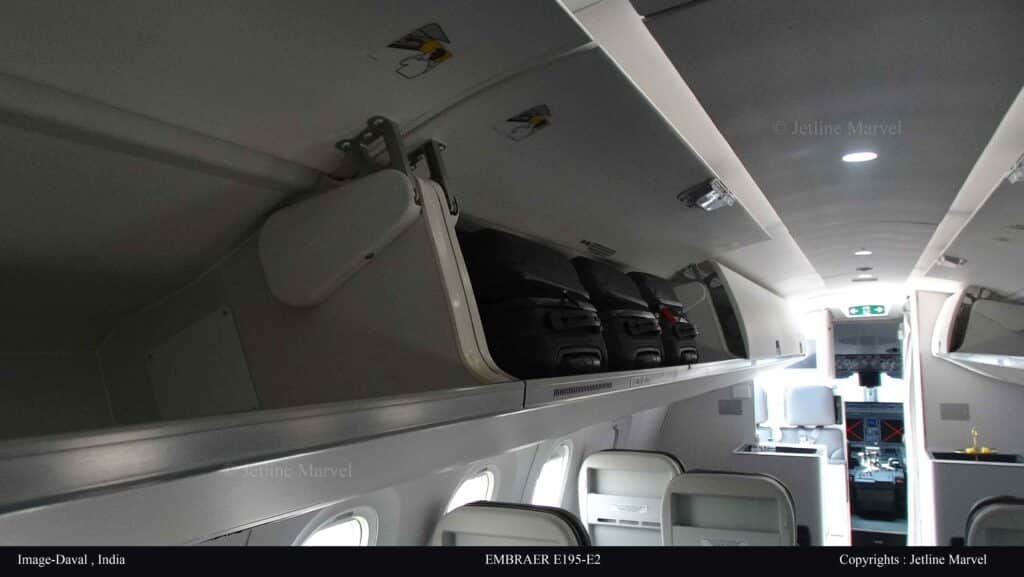
One advantage of luggage bins is that they are broader and easier to get the bags when they are rolled down to boxes.
According to Embraer, the number of improvements made in the aircraft from previous generations has boosted efficiency, which has resulted in a 25% reduced fuel burn per seat when compared to A220-300 aircraft.
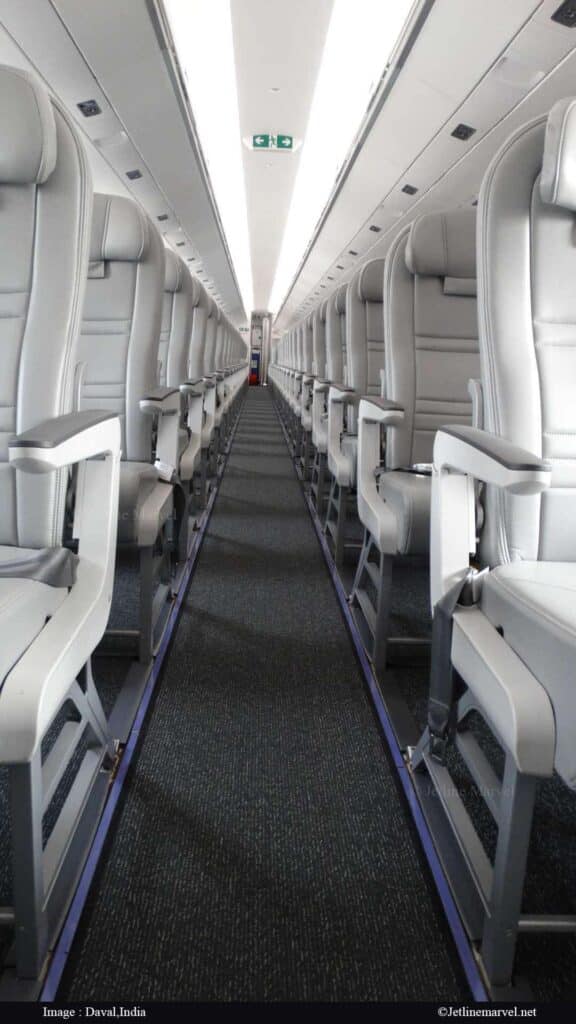
The seats are designed in such a way that housekeeping and air circulation around the cabin may be readily maintained.
Embraer and American Airlines Sign Contract for 15 E175s
The lighting on the aeroplane varies with each phase of flight, creating mood lighting. It’s designed to work in tandem with a traveler’s circadian cycles, assisting with sleep when resting and waking up when landing.
[the_ad_group id=”4060″]
The E195-E2 is the biggest of the E2 series, with a single-class economy layout seating up to 146 people. The lack of centre seats in the 2-2 arrangement of the cabin may be the first issue that many passengers notice. Aisle or window seats are available in each row.
Embraer highlighted the various options, which range from 29 inches at the smallest to 34 inches at the largest. Slim line seats might come with standard conveniences like normal-size tray tables and literature pockets. Seats with a higher pitch level may provide more conveniences. A seat with 34 inches of legroom offers adequate area for a headrest.
Airlines can also add a full-size business class cabin, similar to those seen on bigger planes. Embraer designed and manufactures a unique business class seat exclusively for the E190-E2 aircraft line.
[the_ad_placement id=”article-ad”]
A 2-2 arrangement with a seat pitch of at least 51 inches is possible with staggered seats. On the E170/190 series of aircraft, the standard business class layout is a 1-2 arrangement to allow for bigger seats.
Passengers in the window seat should be able to stroll in front of the aisle seat without disturbing their fellow passengers, making it simpler to reach the aisle. On an E-Jet in a 2-2 business class layout, it’s not quite direct aisle access, but it’s the next best thing.
Embraer is presently fine-tuning the product, which is the first of its sort on an E-Jet. The E2 series aircraft have wider windows than the preceding generation, providing more natural light and greater views for passengers.
Navigation charts and maps may be presented on the displays without the requirement of an external device, providing pilots with the most up-to-date situational awareness.
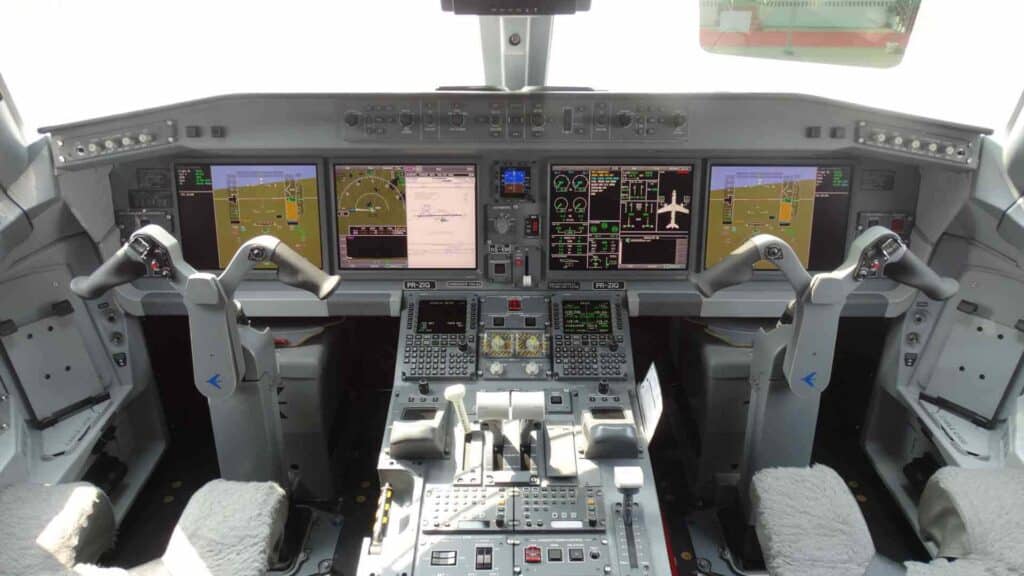
The cockpit is equipped with the most up-to-date avionics and a fourth-generation fly-by-wire technology.

Flight crew Capt Berto , Embraer ” This aircraft is wonderful and simple to operate and maintain, having been in service for almost 20 years. This aircraft would be ideal for the Indian aviation sector. “
Embraer pilots of the current generation will also observe that the control column is the same in an upside-down W-shape. Airlines may save money on pilot training by using a cockpit that is substantially equivalent to the E170/E190 series of aircraft. Only slight modifications in training are necessary because the type ratings are same.
[the_ad id=”11602″]
In India, most airlines employ ATR aircraft for small-area connectivity since the engines used in ATR aircraft are noisy, whereas Embraer uses Pratt & Whitney engines, which are quieter than ATR engines. Currently, the E145 ERJ is operated by Star Air in South India.
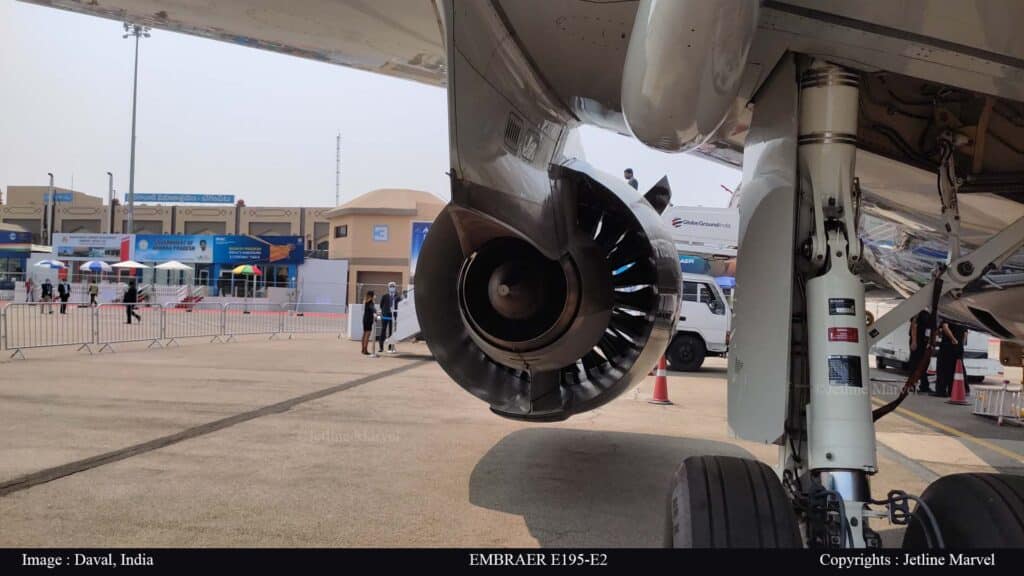
The aircraft has a basic landing gear design for ease maintenance, and the PW Geared Turbofan engine can be seen.
Under fuselage retractions, the landing gears would be identical to those on other aircraft, increasing the aerodynamic efficiency during the cruise. E195-E2 has a simpler mechanism that saves the operator money on maintenance.
The 2× Pratt & Whitney PW1919G Engine is used to power the E195. The E195-E2’s high by pass ratio engine allows it to reach a peak speed of Mach.082 while minimizing fuel consumption.
[the_ad id=”11603″]
Based on the orders it is receiving, the E195-E2 has shown to be the aircraft that will salvage the E2 programme. However, it still has a long way to go to catch up to its rivals.
The improved flying stability, resulting in higher lift and weight savings, as well as drag reductions due to the 26 percent reduction in horizontal tail (tailplane) size, account for the fuel savings of the now closed loop fly-by-wire control. Smaller control surfaces reduce drag and the aircraft’s total weight.
[the_ad_placement id=”content”]
The Airbus A220 has a range of around 3,400 nautical miles, which is 800 nautical miles more than the Embraer E195-E2. The smaller Embraer E190-E2 has a slightly higher range of 2,850 nautical miles in a single-class configuration.
All airlines need and want to make more money, and the Embraer is the best in terms of earning more money. As a result, the branding trademark was created using Profit Hunter, which actually helps airlines gain a greater margin of profits from operations.
The Embraer E195 would be most suited for Indigo, Go-first , Spice Jet airlines and Star air, who already provide regional connectivity. This aircraft is being considered for operation by international airlines because to its cost-cutting qualities, and the Indian market is currently examining it for regional connectivity.

Aircraft comparison
Osprey is faster than Chinook helicopter ?
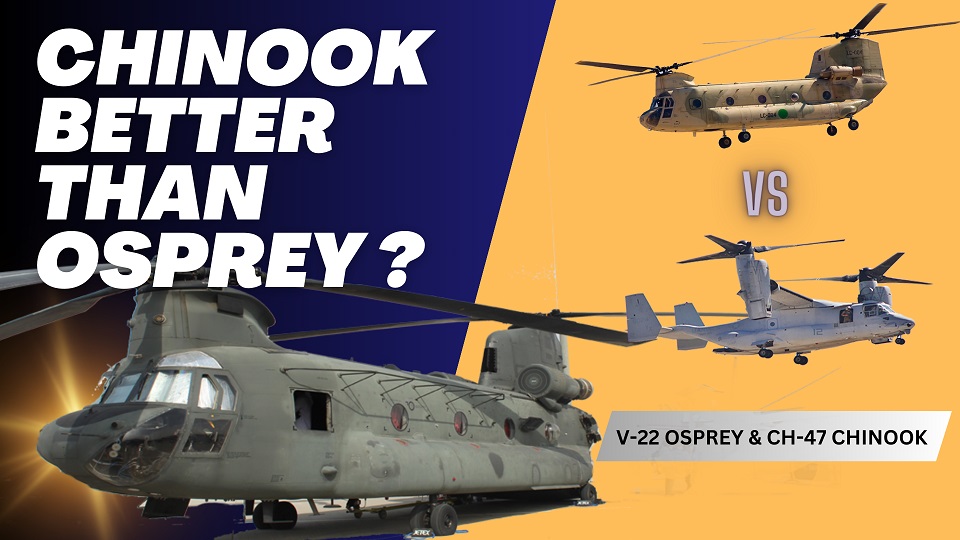
In this article, we’ll delve into two distinct military aircraft that have played essential roles in United Air Force defense. Both aircraft have unique characteristics in terms of usage and flying capabilities. One is capable of vertical takeoff and flies like an aircraft, while the other is a helicopter with two tandem rotors. Let’s explore each of these aircraft in detail.
The speed of helicopters can vary depending on several factors such as their design, engine power, payload, and mission requirements. Generally speaking, the Osprey (specifically referring to the V-22 Osprey) is faster than the Chinook helicopter.
The V-22 Osprey is a tiltrotor aircraft, meaning it can take off and land vertically like a helicopter but also tilt its rotors forward to fly like an airplane. This design allows the Osprey to achieve higher speeds compared to conventional helicopters. The cruising speed of the V-22 Osprey is around 241 knots (277 mph or 446 km/h).
On the other hand, the Chinook helicopter, such as the Boeing CH-47 Chinook, has a cruising speed typically around 170 knots (196 mph or 315 km/h). While the Chinook is a highly capable and versatile helicopter known for its heavy-lift capabilities and reliability, it generally operates at lower speeds compared to the Osprey.
The comparison between an Osprey and a Chinook helicopter involves contrasting two distinct aircraft with different designs, capabilities, and purposes:
MV-22 Osprey details:
The Osprey has garnered significant controversy since its inaugural flight, primarily stemming from issues associated with its tiltrotor design. These challenges have led to several incidents and crashes, resulting in the tragic loss of pilots and crew members and prompting multiple groundings of the aircraft.
However, efforts are underway to address these technical issues swiftly, with plans to rectify the problems and resume flights promptly. Despite these setbacks, the Osprey remains crucial in operational contexts, offering enhanced capabilities for transporting both cargo and crew members, underscoring its pivotal role in various missions.
Except for the United States and Japan, no other country has been granted authorization to utilize the Osprey aircraft. Its unique design and specialized nature, being built in the United States, likely necessitate governmental permission for export to other nations.
The Osprey stands out for its groundbreaking design and innovation, featuring the ability to transition from vertical to horizontal rotor positions while also generating thrust like a conventional aircraft.
- MV-22 Osprey:
- The MV-22 Osprey is a tiltrotor aircraft, meaning it can take off and land like a helicopter but fly like a fixed-wing aircraft once airborne.
- It’s primarily used for vertical takeoff and landing (VTOL), troop transport, cargo transport, and aerial refueling.
- The Osprey has a unique ability to combine the vertical lift capability of a helicopter with the speed and range of a turboprop aircraft.
- It can carry up to 24 troops or 20,000 pounds of internal cargo and has a top speed of around 315 miles per hour (507 km/h).
- The Osprey is utilized by the U.S. Marine Corps, U.S. Air Force Special Operations Command, and other military forces around the world.
Boeing CH-47 Chinook:
The Chinook helicopter stands as a testament to unparalleled engineering and innovation, making it one of the most distinctive aircraft ever constructed. Since its inception, no other nation has attempted to replicate its singular design, owing to the extraordinary precision and aerospace technology required for its construction. This helicopter, revered as an engineering marvel, has become a staple in major battlegrounds, renowned for its exceptional capacity to transport troops and cargo to any destination. Remarkably versatile, it operates seamlessly on both land and water surfaces, boasting an integrated floating system that enhances its capabilities even further.
Selected countries have been granted permission to utilize the Chinook helicopter, showcasing its global appeal and strategic importance. Furthermore, ongoing development efforts are underway to enhance the speed and carrying capacity of the next version of this iconic aircraft. Renowned for its exceptional safety record, the Chinook stands as one of the safest helicopters in operation today, with a remarkably low incidence of crashes. Its versatility is unmatched, making it an invaluable asset for operations in diverse terrains and environments.
- Boeing CH-47 Chinook:
- The Chinook is a tandem rotor helicopter, known for its distinctive twin-rotor design.
- It’s a heavy-lift helicopter primarily used for troop transportation, artillery emplacement, battlefield resupply, and various other missions.
- The Chinook has a rear loading ramp for cargo and troops, making it well-suited for quick loading and unloading.
- It can carry up to 55 troops or 24,000 pounds of cargo internally and has a top speed of around 170 miles per hour (274 km/h).
- The Chinook is widely used by the U.S. Army and various other military forces worldwide, including the UK, Canada, and others.
Comparison:
- Design: The Osprey is a tiltrotor aircraft, while the Chinook is a tandem-rotor helicopter.
- Speed and Range: The Osprey has a higher top speed and longer range compared to the Chinook due to its fixed-wing aircraft capabilities.
- Payload Capacity: The Chinook generally has a higher payload capacity for both troops and cargo compared to the Osprey.
- Versatility: While both aircraft are versatile in their own right, Osprey’s ability to take off and land vertically as well as fly at high speeds over long distances gives it a unique advantage in certain scenarios. However, the Chinook’s ability to carry larger payloads makes it better suited for heavy lift operations.
- Cost and Maintenance: Maintenance and operating costs may vary between the two aircraft, with tiltrotor technology typically being more complex than traditional helicopter designs.
Most Popular .
These are the Top 10 best US airlines of 2024
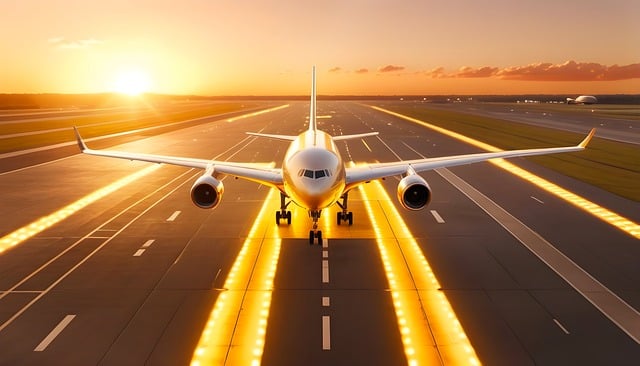
In an era where air travel plays an integral role in connecting people and places, the quality of airline service can significantly impact travelers’ experiences.
As we navigate the ever-changing landscape of aviation, insights into the performance and reliability of different carriers become invaluable. Enter WalletHub’s comprehensive analysis, offering a glimpse into the 10 best US airlines of 2024. Join us as we embark on a journey through the clouds, exploring the top performers.
Best airlines of 2024
- Alaska Airlines (68.07 out of 100): Anchoring the list is Alaska Airlines, celebrated for its consistency and customer satisfaction. With a score of 68.07, Alaska Airlines sets the standard for excellence in the skies.
- SkyWest Airlines (65.96): Following closely behind is SkyWest Airlines, recognized for its operational prowess and reliability. With a score of 65.96, SkyWest secures its position among the elite.
- Spirit Airlines (65.69): Surging into third place is Spirit Airlines, renowned for its affordability and expansive route network. Despite its low-cost model, Spirit Airlines earns acclaim with a score of 65.69.
- Delta Air Lines (61.56): A stalwart of the industry, Delta Air Lines maintains its reputation for superior service and efficiency. With a score of 61.56, Delta continues to soar above the competition.
- United Airlines (51.96): United Airlines occupies the middle ground, offering a balance of convenience and comfort to travelers. With a score of 51.96, United remains a dependable choice for domestic and international flights.
- JetBlue Airways (51.6): JetBlue Airways, known for its focus on customer experience and amenities, secures its place in the top 10 with a score of 51.6.
- Hawaiian Airlines (48.3): Transporting passengers, Hawaiian Airlines earns accolades for its hospitality and island-inspired service. With a score of 48.3, Hawaiian Airlines embodies the spirit of aloha.
- American Airlines (46.52): Despite facing challenges, American Airlines maintains its presence among the top performers with a score of 46.52, showcasing resilience in the competitive aviation landscape.
- Frontier Airlines (43.57): Frontier Airlines offers budget-conscious travelers a gateway to the skies with its affordable fares and diverse destinations. With a score of 43.57, Frontier Airlines secures its place in the top 10.
- Southwest Airlines (36.03): Rounding out the list is Southwest Airlines, renowned for its no-frills approach and extensive route network. With a score of 36.03, Southwest Airlines remains a popular choice for travelers seeking simplicity and value.
Aviation
South Korea Introduces Cutting-Edge MRO Center for F-35 and IAI

South Korea is set to make waves in the aerospace industry with the establishment of a cutting-edge Maintenance, Repair, and Overhaul (MRO) hub for F-35 fighter jets and IAI (Israel Aerospace Industries) aircraft.
Central to this initiative is the specialization in converting Boeing 777-ERSF, colloquially known as the “Big Twin,” from passenger to freighter configurations. Under the terms of the agreement, IAI will spearhead the conversion of six B777-300ER and B777-200LR aircraft annually, commencing in 2024. This strategic move is in response to the anticipated surge in demand for wide-body freighter aircraft capable of long-haul flights.
Furthermore, South Korea’s forward-looking vision extends beyond aircraft conversion, with plans to establish a Lockheed Martin F-35 maintenance, repair, and overhaul depot at Cheongju Air Base by 2027. This strategic move not only enhances the operational readiness of South Korea’s air force but also positions the nation as a regional hub for F-35 maintenance expertise.
In preparation for this expansion, thirty Republic of Korea Air Force (ROKAF) engineers and technicians are slated to undergo intensive maintenance training in the United States in 2025, a testament to South Korea’s commitment to fostering local expertise and talent.
IAI’s visionary approach to certification and collaboration underscores the potential for transformative change. With plans for the 777-300ERSF certification process set to unfold in Israel, followed by the rigorous scrutiny of regulatory agencies such as the US Federal Aviation Administration (FAA), the stage is set for the ‘Big Twin’ to soar to new heights of success.
In partnership with esteemed entities like STK and Incheon International Airport Corporation, this collaboration promises to unleash a wave of benefits, amplifying the resilience and competitiveness of the Korean aviation sector while catalyzing job creation and economic prosperity.

